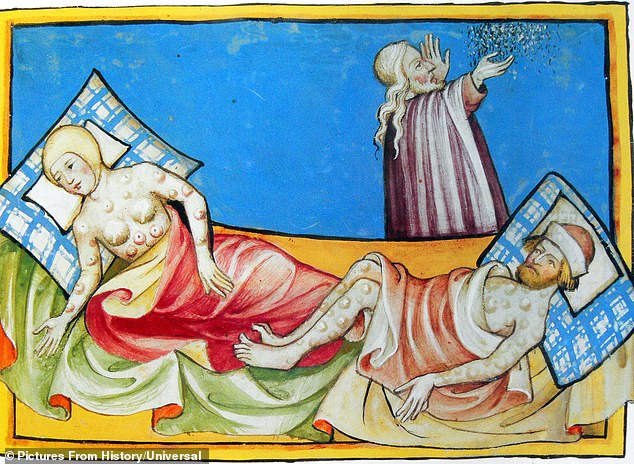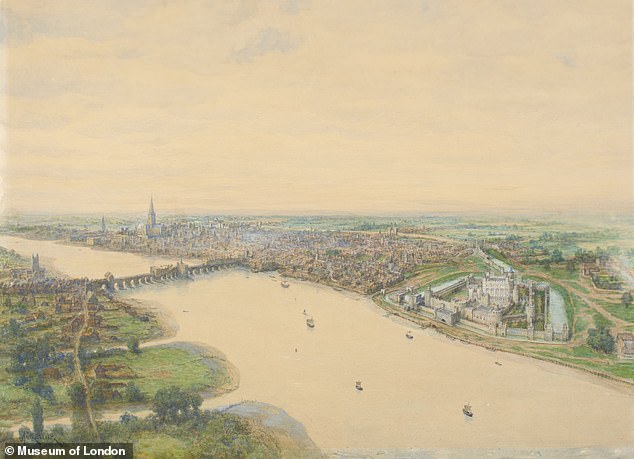Black women of African descent were more likely to die of the medieval plague, human remains research finds – as experts blame ‘devastating effects’ on ‘premodern structural racism’
Black women of African descent were more likely to die from the plague in medieval London, academics have found.
Non-white residents of London were dying in greater numbers due to the “devastating effects” of “pre-modern structural racism”, according to research by the Museum of London and academics in the US.
What is now often called the Black Death killed millions of people in Europe and Asia between 1348 and 1350.
In London, where half the population died, bodies had to be piled five times deep in mass graves.
The new research examined the remains of 145 individuals in three plague burials.
It found that plague funerals included significantly more people of color and black African descent than non-plague funerals.
Black women of African descent were more likely to die from the plague in medieval London, academics have found. Pictured: An image of plague victims being buried during the Black Death, which took place between 1348 and 1350
The researchers examined data on bone and tooth changes on remains from three cemeteries: East Smithfield emergency plague cemetery, St Mary Graces and St Mary Spital.
They found that the likelihood of dying from the plague was greatest among people who were already facing significant hardship, such as the famines that hit England at the time.
The academics concluded that the higher death rates were the result of racism, pointing out that social and religious divisions at the time were based on origins, skin color and appearance.
The study was published in the journal Bioarchaeology International and was led by Dr Rebecca Redfern, senior curator of archeology at the Museum of London.
It was the first study to examine how racism affected a person’s risk of death during what was then known as the Great Pestilence.
The research will form the basis for exhibitions at the Museum of London’s new base in Smithfield, opening in 2026.
Scientists can determine the ancestry of individuals based on DNA from bones and teeth.
Chemicals in their teeth also point to where they grew up.
Experts can also use a method from forensic anthropology called macromorphoscopy to examine the facial bones and features of their skull to determine their ancestry.
Dr. Redfearn said: ‘We have no primary written sources of people of color and people of black African descent during the Great Pestilence of the 14th century, so archaeological research is essential to understand more about their lives and experiences.

Non-white London residents died in greater numbers due to the ‘devastating consequences’ of ‘pre-modern structural racism’, Museum of London research shows
‘As with the recent Covid-19 pandemic, the social and economic environment played an important role in people’s health and this is most likely why we are finding more people of color and people of black African descent at plague funerals.’
Dr. Joseph Hefner, associate professor of anthropology at Michigan State University, said: ‘This research delves deep into previous thinking about population diversity in medieval England, based on primary sources.
‘Combining bioarchaeological methods and theory with forensic anthropological methods allows for a more nuanced analysis of these very important data.’
Professor Sharon DeWitte, a biological anthropologist at the University of Colorado, said: ‘This research not only adds to our knowledge of the biosocial factors that influenced the risks of mortality during medieval plague epidemics, it also shows that there is a deep history is of social marginalization that shapes health and vulnerability to disease in the human population.”
Dr. Dorothy Kim, an assistant professor of English at Brandeis University in Massachusetts, claimed that England’s capital in the Middle Ages was “a black London.”
She added: ‘The article outlines field-changing possibilities for new archival research and archaeological work.

What is now often called the Black Death killed millions of people in Europe and Asia between 1348 and 1350. Above: An image of 14th century London
‘In rethinking a multiracial English past, we must consider how race and anti-blackness were navigated/negotiated on a daily basis in the streets and cultural landscape of London.’
From skeletons from the East Smithfield Cemetery examined in an earlier study conducted by Dr. Redfearn, found that none of the plague victims of black African or mixed descent had been abused after death.
The experts could see that their bodies had been placed in the graves with ‘care and respect’.
However, examination of the remains of a woman of African descent revealed that she had osteoarthritis in her spine and a diseased shoulder joint.
Both conditions were caused by repetitive manual labor and likely caused pain, Dr. Redfearn and Dr. Hefner said in 2021.
The woman also had arthritis in her jawbone, meaning she could have experienced pain when eating and speaking.
